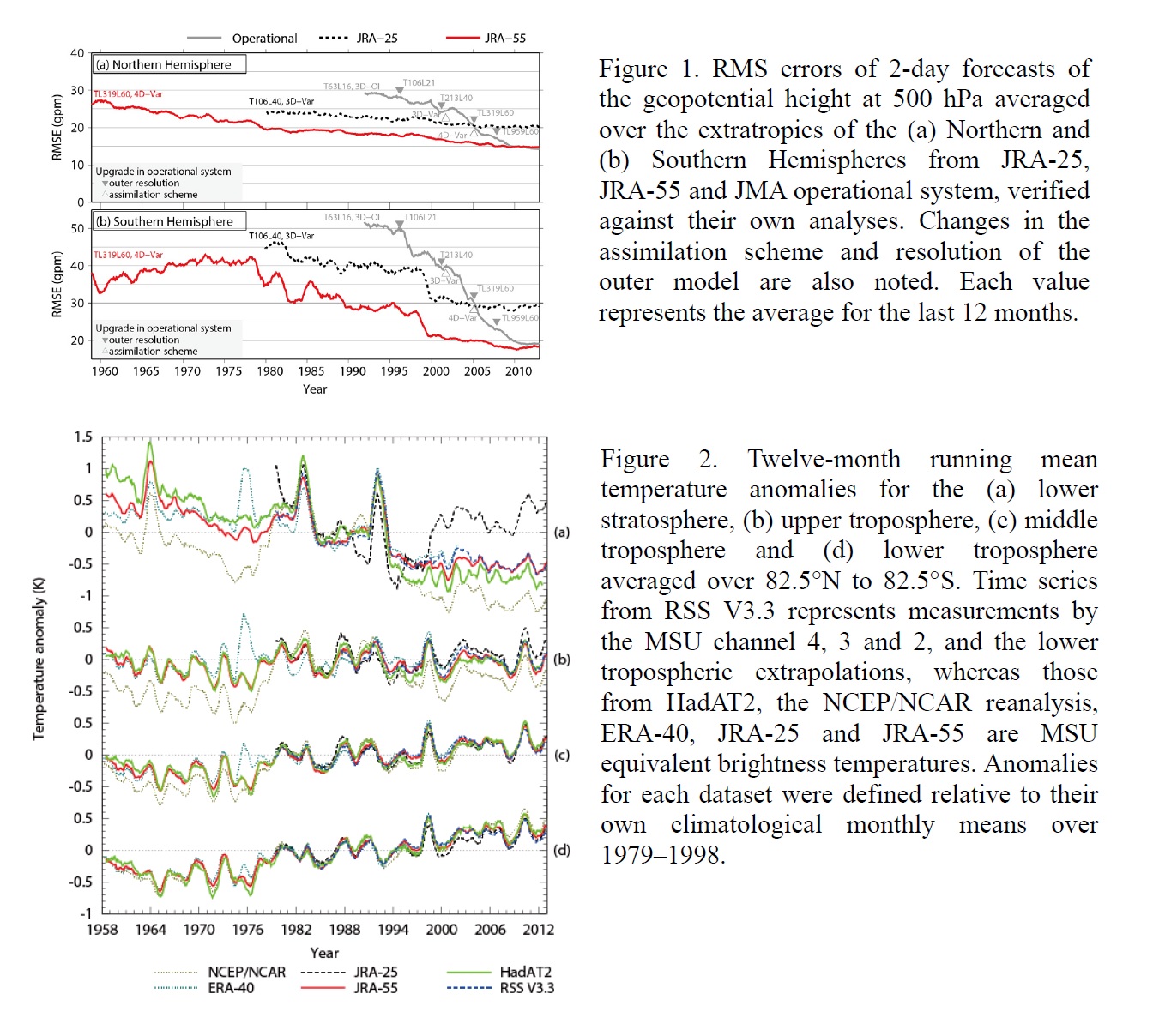JMSJ Awards
JMSJ Awards in 2015
In 2015, the following two papers were awarded. JMSJ Award 2015
Kobayashi et al (2015)
Kobayashi, S., Y. Ota, Y. Harada, A. Ebita, M. Moriya, H. Onoda, K. Onogi, H. Kamahori, C. Kobayashi, H. Endo, K. Miyaoka, and K. Takahashi, 2015: The JRA-55 Reanalysis: General specifications and basic characteristics. J. Meteor. Soc. Japan, 93, 5-48.
https://doi.org/10.2151/jmsj.2015-001
Graphical Abstract
Highlights:
- The Japan Meteorological Agency (JMA) conducted the second Japanese global atmospheric reanalysis, called the Japanese 55-year Reanalysis or JRA-55. It covers the period starting in 1958, when regular radiosonde observations began on a global basis. JRA-55 is the first comprehensive reanalysis that has covered the last half-century since the European Centre for Medium-Range Weather Forecasts 45-year Reanalysis (ERA-40), and is the first one to apply four-dimensional variational analysis to this period.
- JRA-55 has been produced with the TL319 version of JMA’s operational data assimilation system as of December 2009, which was extensively improved since the Japanese 25-year Reanalysis (JRA-25). It also uses many newly available and improved past observations. The resulting reanalysis products are considerably better than the JRA-25 product (Fig. 1).
- Two major problems of JRA-25 were a cold bias in the lower stratosphere, which has been diminished, and a dry bias in the Amazon basin, which has been mitigated.
- The temporal consistency of temperature analysis has also been considerably improved compared to previous reanalysis products (Fig. 2).
Satoh et al (2015)
Satoh, M., Y. Yamada, M. Sugi, C. Kodama, and A. T. Noda, 2015: Constraint on future change in global frequency of tropical cyclones due to global warming. J. Meteor. Soc. Japan, 93, 489-500.
Special Edition on Contributions to Asia Oceania Atmospheric Sciences
https://doi.org/10.2151/jmsj.2015-025
Graphical Abstract
Highlights:
- A diagnostic relation based on the convective mass flux to constrain the global frequency of tropical cyclones is proposed.
- The simulation results with 20-year 14km-mesh NICAM showed that the future reduction in the global frequency is much larger than that of the total tropical convective mass flux.
- Either a future increase in the frequency of stronger tropical cyclones or an areal increase in strong updrafts explains the difference in the global frequency of tropical cyclones.
- This study suggests the future intensification of tropical cyclones leads to the future reduction of their frequency under the constraint that the contribution of tropical cyclone remains the same or smaller.








